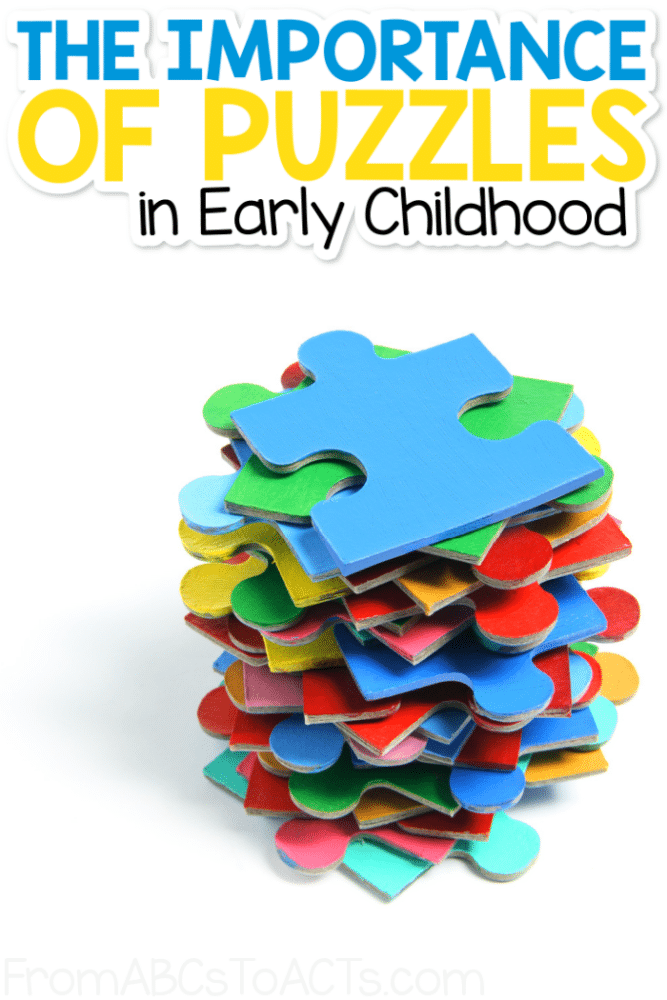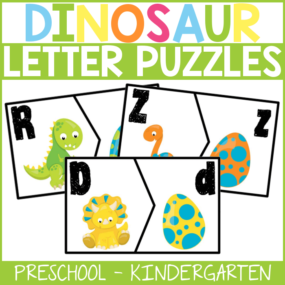This post may contain affiliate links. For more information, please see my full disclosure policy.
If you’ve taught young children for any length of time, then you know just how much they love puzzles. From simple, single pictures to the more advanced jigsaw puzzles, they’re a fantastic activity for children of all ages!
And while they’re primarily seen as fun toys they’re actually incredibly beneficial to a child’s development.
The importance of puzzles in early childhood really cannot be overstated and understanding what they can do for your little learners is an important part of incorporating more of them into your daily lessons!
And it doesn’t take much!
Incorporating just a few minutes of puzzle play into your students’ learning each day provides them with so many opportunities to work on everything from social skills to mathematics!
But that’s not all!
There are so many more incredible benefits of puzzles and we’re going to cover several of those while also throwing some tips for keeping your students engaged in there as well!

Enhance Problem Solving Skills
Puzzles are a fantastic way to work on both critical thinking skills as well as problem solving skills!
They provide children with the opportunity to practice the trial and error method of finding a solution and this comes in handy later in life.
And manipulating the pieces and figuring out where they fit and where they don’t introduces children to the early math skills that they’ll need in order to be successful later on.
Puzzles are also perfect for teaching your children how to persevere in the face of a challenge. Puzzles are really the only “games” that cannot be completed or won by cheating. You can’t force the pieces together if they’re not the right fit and there is no way to out smart your opponent, so to speak.
The only way to finish is to exercise patience while staying focused on the bigger picture. This will, obviously, be harder for younger children as they are more easily frustrated, but it also provides an excellent opportunity to talk about emotions and work on those emotional skills.
Build Hand-Eye Coordination
Flipping, rotating, moving, and manipulating a puzzle piece really allows your students to give their fine motor skills a fantastic workout!
Using these fine motor skills while finding a piece, picking it up, searching for the right spot and fitting it into the puzzle allows your students the opportunity to strengthen those hand-eye coordination skills as well!
-
CVC Puzzles$2.00
-
Color Puzzles$2.00
-
Dinosaur Letter Puzzles$2.00
Strengthen Cognitive and Memory Skills
Puzzles are perfect for helping children, especially preschoolers, develop critical cognitive skills.
As they get older and enter their school years, they will be expected, on a daily basis, to follow a set of instructions to complete projects and tasks. Playing with puzzles while they are young teaches them not to get ahead of themselves and to complete these tasks one step at a time just as they would with the pieces of a puzzle.
As an added bonus, your preschooler will build their memory skills as they learn to recognize the simple shapes and colors that make up the easier first puzzles designed for toddlers and preschoolers.
All of these skills are vital to a child’s development and there are, of course, a million different ways to work on all of them, but puzzles are your one stop shop for covering them all with a single activity!
And to top it all off, every puzzle that your students complete comes with an amazing boost of confidence and a spectacular sense of accomplishment!
Printable Puzzles Your Students are Going to Love
- House Puzzles for Preschoolers
- Animal Pattern Puzzles
- Ten Frame Number Word Puzzles
- Alphabet Pencil Puzzles
- Beginning Sound Puzzles for Kids
- Rainbow Number Puzzles
Now that you understand the importance of puzzles in early childhood, here are some tips for getting your students to play with and engage in puzzles:
- Make sure they are age appropriate puzzles. While it shouldn’t be so easy that your students could put them together in their sleep, being too complex could frustrate them into giving up.
- Along the same vein, be on stand by to help if needed! While you shouldn’t jump in and put the puzzles together for them, letting them fend for themselves if they’re not ready or getting frustrated won’t do them any good either. Helping them put the edge pieces together and explaining that they can look for clues in this outline is often a great way to get them going.
- Bright, fun, and colorful shapes and pictures on larger puzzle pieces can help engage younger children and hold their attention for a longer period of time.
- If at all possible, find puzzles that appeal to their interests. Are your little ones airplane fanatics? Obsessed with princesses or trains? There are so many different types of puzzles out there that finding some that incorporate some of their favorite things should be a breeze!
- Work with them on a more difficult puzzle. While they still shouldn’t be too incredibly hard to put together, the difficulty level can be slightly increased if you work on it together. Not only will their minds have to work a little harder, but your students are going to love working with you!
- Have them create their own puzzle. Kids absolutely love crafting and making things themselves so letting them put together a puzzle that they made on their own is really going to interest and engage them!


